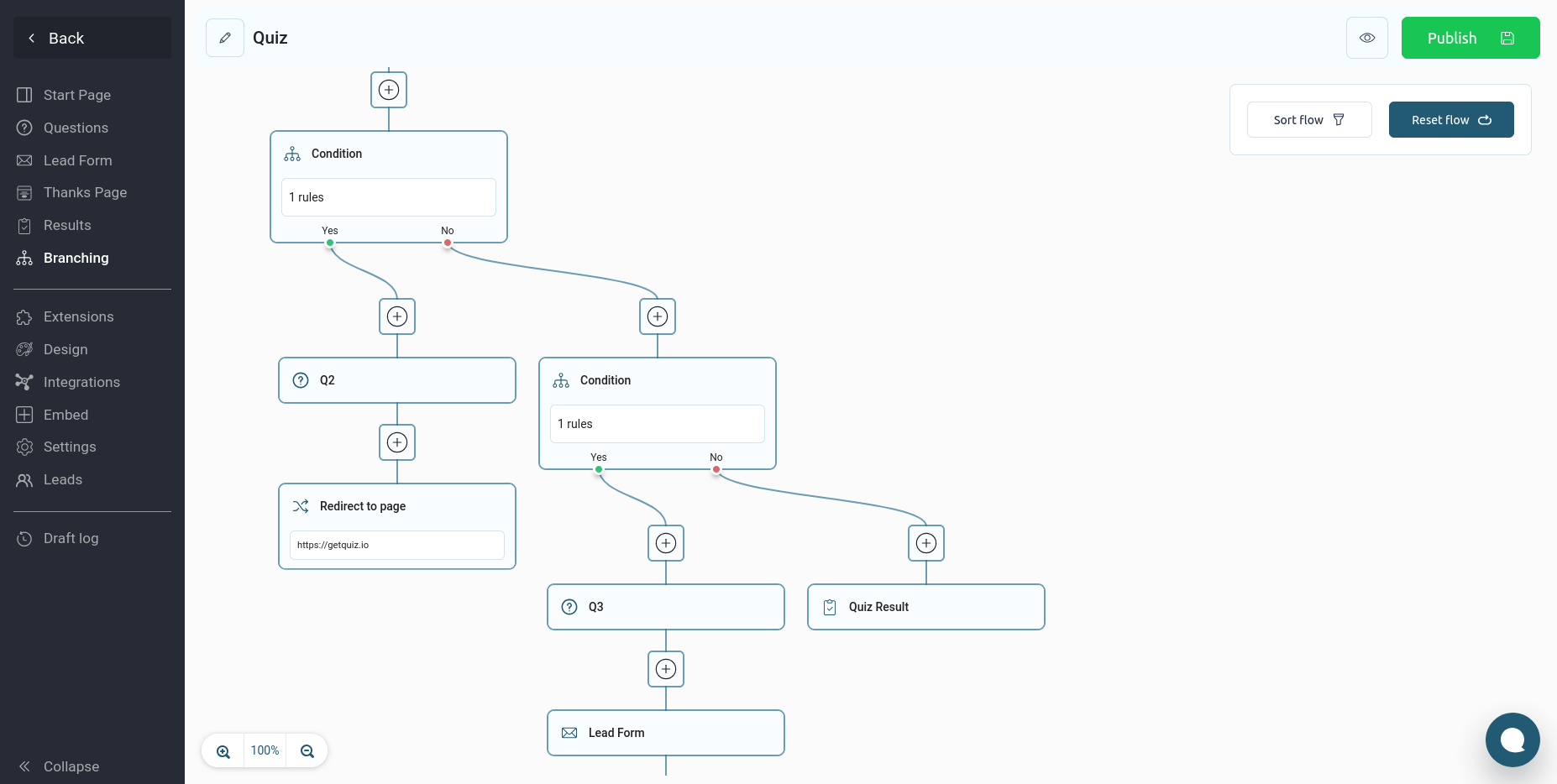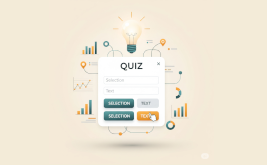What is a marketing quiz?
A marketing quiz is a mini-survey with a personalized result that turns website visitors into leads. Instead of a long form, there is a short interactive that is pleasant to complete.
Example: An online store launches a quiz for the site called "Find your perfect style in 2 minutes." The user answers a few questions, receives personal recommendations, and leaves an email to find out the result.
A Brief History of Marketing Quizzes
Marketing quizzes emerged as an audience engagement tool back in the early 2000s, when brands began actively using interactive content to increase conversions on their websites. The first online quizzes were simple tests and quizzes that gave users the opportunity to learn something new about themselves or test their knowledge.
With the rise of social media, quizzes have become a powerful viral marketing tool, with users sharing their results and driving additional traffic to brand sites.
Evolution and milestones
Modern trends in marketing quizzes
Why Quizzes Work
Marketing quizzes increase engagement through an interactive format, provide the opportunity to segment your audience and collect valuable data. What makes them unique is that they entertain and inform at the same time, making them an effective tool for brand growth and sales.
Who especially enjoys quizzes?
- E-commerce: product selection, recommendations, upselling.
- Services: cost calculator, request for consultation.
- EdTech: test “which course is suitable” + segmentation.
- Medical/Wellness: Patient pre-qualification.
- Real estate: property selection + lead form.
Benefits for business
What is a quiz funnel
A quiz funnel is the path a user takes from the first question in an interactive survey to receiving a personalized result or offer.
Simply put, this is not just a contact form, but a mini-journey where the client is drawn into a dialogue with the brand step by step.
Example: a person visits the website of a company that sells windows. He is greeted by a quiz: "What type of house do you have?", "Do you want to save on heating?", "Do you need turnkey installation?" While he answers, the company collects data on his needs and finally gives the result - for example, "Your ideal option is triple-glazed windows, and if you order within a week, you will receive a 10% discount."
How does a quiz funnel work?
Traffic
Advertising or organics attract visitors
Quiz
The user answers questions
Contacts
He leaves an email or phone number
Sales
Leads turn into customers
- Attracting attention
The quiz itself looks like a game. People are interested in pressing buttons, choosing options, getting a personal result. This lowers the entry barrier compared to a long questionnaire or a dry form. - Audience segmentation
The user's answers turn into valuable analytics: who they are, what they are interested in, what their needs are. This helps businesses show different offers to different segments. - The effect of small steps
Instead of asking for contacts right away, a quiz offers easy questions. When a person has made 3-4 clicks, he is already engaged and much more willing to leave a phone number or email for the sake of the final result. - Offer personalization
At the end of the quiz, the client receives not "something for everyone", but a recommendation "for him". Psychologically, this creates trust and a sense of value. - Collecting leads and closing deals
After the result is issued, you can embed a contact capture form, a bonus, a discount, or immediately redirect the person to a messenger/call with a manager.
Why Quiz Funnels Work Better Than Regular Forms
- It turns a routine (leaving a request) into a game.
- Collects more customer data than the standard form.
- Gives businesses the opportunity to “warm up” a person even before the manager calls.
- Allows you to automate the sales process: different results and offers can be shown to different segments.
Common Mistakes When Launching a Quiz
- 10+ questions without progress and motivation - people don't finish.
- Boring wording - the quiz should be light and lively.
- Showing results without contact means loss of conversion and retention.
- Lack of mobile optimization - up to 70% of traffic from the phone.
- The result is too general - a tangible next step is needed (selection, discount, consultation).
Best practices
- The optimal number is 5–7 questions.
- Use visual elements (pictures, emoji, icons).
- Create different results to give the user a personalized experience.
- Add a progress bar - it increases the completion of the quiz.
- Formulate questions so that they are easy and quick.
- Integrate the quiz with CRM or email services.
- Offer instant results - selection, discount, checklist.
- Test different variations of questions and designs (A/B tests).
- Consider mobile traffic - the quiz should be convenient on a smartphone.
Real cases
Furniture store - +47% of applications
Online school - 500 leads in 7 days
Services sector — CPL ↓ by 30%
Cost calculator + segmentation by urgency and budget. Automatic appointment booking, reminders in messenger.
Want the same results for your business? Launch an online sales quiz with QuizLead and get your first leads today.
Branching in a Quiz: How Smart Logic Works
One of the key benefits of a quiz funnel is branching . Essentially, these are scenarios that change depending on the user's answers.
Imagine a quiz as a tree: a person chooses one answer option and then moves along its branch. Thanks to this:
- Everyone sees only relevant questions
If the client chooses “Apartment in a new building”, he does not need to answer questions about the old stock. - Saves the user's time
The quiz does not overload with unnecessary points, but leads a person along a short and logical path. - You get accurate data
Branching helps segment clients by scenarios: budget, type of service, timeframe, etc. - Personalization is on the rise
In the end, a person receives a result that is as close as possible to his situation, which means he trusts the recommendations more.
Example of branching in a quiz for apartment renovation
- Question: “Do you have an apartment in a new building or a secondary market?”
- New building → the following questions are about rough finishing and planning.
- Secondary market → questions about dismantling, redevelopment and replacement of utilities.
In fact, the same quiz becomes several different funnels , adapted to different audience segments.
Ready to try?
If you still use only standard forms, it's time to test the quiz. From the very first days, you will feel the difference in the quantity and quality of leads.
Create your first quiz, embed it on your website and get a measurable increase in conversion.



